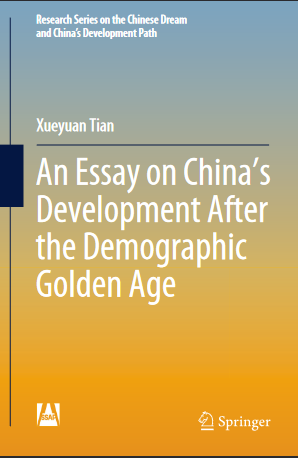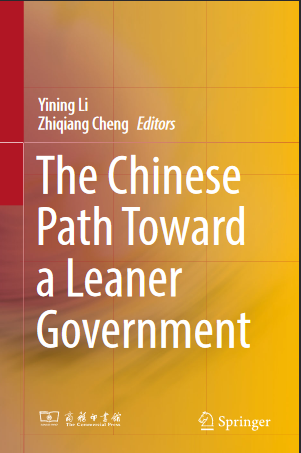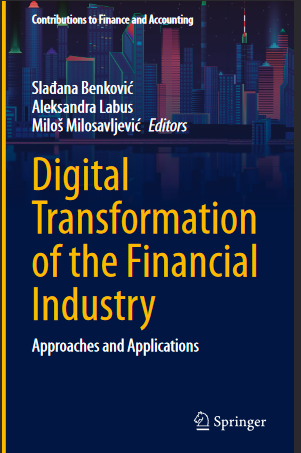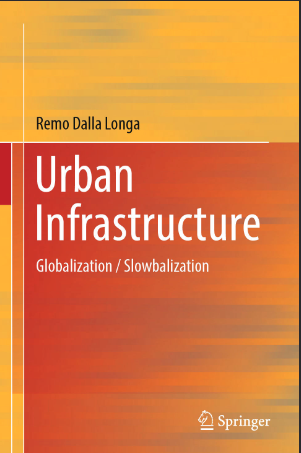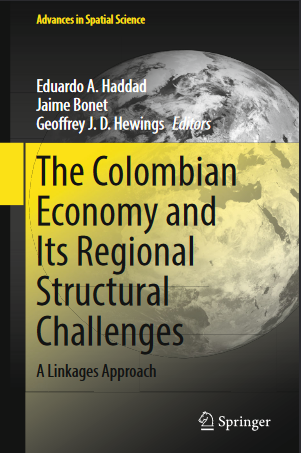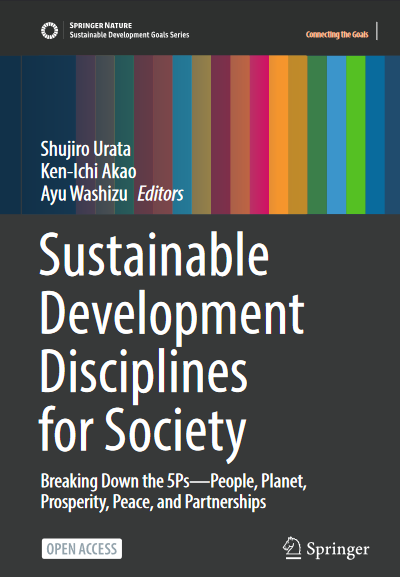موضوعات
آموزش و پرورش
ادبیات و زبان
پزشکی، دندانپزشکی و داروسازی
تاریخ و جغرافیا
داستان و رمان
دیگر
دین و فلسفه
روانشناسی
ریاضیات و آمار
سلامتی، تناسب اندام و رژیم غذایی
شیمی و پلیمر
علوم اجتماعی و حقوق
علوم زیستی و بیوتکنولوژی
فیزیک و نجوم
کامپیوتر و اینترنت
کتابهای کودکان و داستان
کسب و کار و اقتصاد
کشاورزی و دامپزشکی و غذا
معماری
مهندسی و فناوری
هنر و تئاتر
محصولات
An Essay on China’s Development After the Demographic Golden Age - Original PDF
نویسندگان: خلاصه: Su Shi, a well-known ci poet of the Song Dynasty, wrote a seven-character quatrain: “It is a range viewed in face and peaks viewed from the side, assuming different shapes viewed from far and wide. Of Mountain Lu we cannot make out the true face, for we are lost in the heart of the very place”. The poem not only depicts the picturesque scenery of Mountain Lu and contains the dialectical idea that those closely involved in something cannot see it clearly, but also provides people with ways and means to observe things, giving the poem an enduring appeal. When we look at the past four million years of human evolution, the trajectory of humanity before they reach the pinnacles of achievements in economic, technological, cultural, and social dimensions today, we may find out there are three distinct eras. As is known to many, an economic era is not defined by what is produced, but by how and what kind of tools are used for production. As the production tools typical of an era vary, so does the capital an economy depends on for growth. We may roughly divide the economic development of humanity into three eras, characterized by hand tools and natural capital, by machine tools and production capital, and by intellectual tools and human capital, respectively. In the era of hand tools, agrarian and prior forms of society—which span from primitive, slave to feudal societies—relied mainly on natural capital. Natural capital provides natural means of living and production, and the multiplication of popula- tion is mainly reflected in the size of the workforce. Therefore, ancient and medieval civilizations appeared mostly in places with fertile land, abundant precipitation, mild climate, convenient land and water transportation, a dense population and large labor force. Cases in point are the five cradles of civilizations, namely, ancient Mesopotamia along the Tigris and Euphrates, ancient Egypt along the Nile Valley, ancient India along the Ganges River, ancient China along the Yellow River, and ancient Greece. The prosperity of the Seljuk Empire, the Russian Empire, and the French Empire in the Middle Ages could also be attributed to their superiority in natural capital and populationHelix Network Theory The Dynamic Structure and Evolution of Economy and Society Interdisciplinary Integrated Economics Creating a Brand New “Micro-Meso-Macro” Paradigm - Original PDF
نویسندگان: خلاصه: Foreword by Gong-Meng Chen I first met and started working with Gan Runyuan, the author of the book, around April and May of 2002. Back then, I had just established the China Accounting and Finance Research Centre at Hong Kong Polytechnic University in Shenzhen. Because the research centre was not long established, it was necessary to introduce various talents. Gan Runyuan was one of the first groups of personnel recruited into the research centre. By 2003, with the active support of Cheng Si-Wei, I and my colleagues had founded the China Venture Capital Research Institute. During that period of time, Gan Runyuan worked as my assistant and participated in many tasks at the China Accounting and Finance Research Centre and China Venture Capital Research Institute. He was easy-going, serious in working, and I was always impressed. Later, Gan Runyuan left Shenzhen to Shanghai. However, he still kept in touch with me and participated in several forums organised by the China Venture Capital Research Institute. At the end of March this year, Gan visited Shenzhen. I learned that he had written an economics monograph, Helix Network Theory, and he invited me to write a preface to this book. He said that this is the ten-year brainchild of his toil, blood, and sweat. I did not expect him after leaving Shenzhen for more than ten years, not only reading that many books on economics and sociology but also spending quite a few years writing an econoThe Chinese Path Toward a Leaner Government - Original PDF
نویسندگان: خلاصه: Building a leaner government ( Jian Zheng Fang Quan , or “streamlining admin- istration and delegating powers” in the official translated documents) is essential in China’s transition from a planned economy to a market economy and in an effort to improve the country’s socialist market economy. People of our generation have all had some experiences with the planned economy. It was a time when the government managed everything from production to consump- tion. In other words, the government assumed the role of both the producer and distributor of goods. Little was outside the government administration. It set quotas that matched its plans and organized supplies according to the quotas. No one in China at that time had ever heard about the term Jian Zheng Fang Quan or stream- lining administration and delegating powers. In fact, it was impossible to streamline the government then because everything was controlled by the government, every decision had to come from the higher authorities, and all kinds of stuff were placed under the quota system. When a government assigned each of its staff with a particular task to either manage or supervise economic activities, how could it be streamlined? Power devolution was even more beyond imagination. The planned economy was based on the concentration of power. If power was delegated, how could the economy and people’s daily life go as the government had planned for them? Indeed, there were times when the Chinese government was concerned about the low efficiency and poor performance of the planned economy that too much concentration of power had entailed. However, there were no better ways. China had quite a few lessons learnt in a hard way. Trials to cut government power or remove some quota all ended up in market disorder. Shifting back to old practice only stifled the economy. Such policy flip-flops occurred time after time during the period of the planned economy. It was a doomed cycle that no one was able to breaDigital Transformation of the Financial Industry Approaches and Applications - Original PDF
نویسندگان: خلاصه: Preface This book is aimed to be a collection of state-of-the-art research findings in digital transformations across the financial industry from the Central and East European markets. Digitalization is fundamentally changing financial services in the last few decades and tends to reshape the landscape of financial industry in an unprecedented manner. This book seeks to extend the concurrent body of knowledge on digital transformation in the financial industry by encompassing significant conceptual contributions, innovations in methods and techniques and by delineating the main applications of digital transformation in the CEE region. Although the books elaborating digital transformation in finance can be found in the market, these books dominantly focus on developed market. The aim of this book is to progress one-step forward—to focus on practice in developing and transitional/post- transitional countries. When any technology disrupts an industry, trailblazers are usually from the highly developed countries. Diffusion of tech-related disruption is, however, only rarely linear and uninterrupted. Thusly, we were highly motivated to collect the evidence on the development of fintech from the CEE countries. This book can serve to all important fintech stakeholders—students, academic community (with both technical and social science background), and practitioners (decision-makers and policy holders in various organizations of the financial sys- tems). As for the students, typical users are master or doctoral level of education with major subjects covering business, finance, accounting, economics, management science, and other fields in social science and/or engineering. As for the academic community, the book might be interesting for lecturers and scholars from CEE countries. Finally, the book is aimed at practitioners—economic analysts, informa- tion technology developers and information system experts, small investors, insti- tutional investors, as well as regulators of the financial system and national financeUrban Infrastructure Globalization / Slowbalization - Original PDF
نویسندگان: خلاصه: The book addresses the issue of urban infrastructures within globalization. Slowbal- ization is then introduced rather than deglobalization to indicate important variables that could stand in the way of a prevailing reading key in the book. Wiig et al (2022) argue that starting from a volume (Graham, Marvin, 2001 ) the study of infrastructures has been brought to the center of urban studies and has inspired the infrastructural turn within urban sciences. Infrastructures, and urban ones in particular, precisely because of their differentiation, specialisms, formulas and organizational models that underlie their assembly, governance and management have always appeared residual compared to other themes such as the city, urbaniza- tion, the form urban, competitive advantage, applied globalization; or on another more technical side, specialisms such as engineering or other technical disciplines called upon to assemble and update the various infrastructures in various ways. Moss (2020) on Berlin, which tells the story of that city (1920–2020) through infrastructures, removing them from invisibility, may be singular, but it is not. Putting them at the center offers new ideas and angles both from the point of view of economics, finance, assembly technique and above all the spatiality of the city within the different forms of globalization. Today, urban infrastructures are also a fundamental part of the economy and finance and follow their evolution and trajectory. They assume particular impor- tance starting from the conjugation with the term globalization; we have seen a rapid transformation of the interconnected infrastructure precisely with the growth of glob- alization and the global city. The analysis focused more on what has been called the western global city and the context of the brownfield infrastructureThe Colombian Economy and Its Regional Structural Challenges A Linkages Approach - Original PDF
نویسندگان: خلاصه: Preface I have been teaching a Ph.D. course on “Applied General Equilibrium Models” at the University of São Paulo, Department of Economics, since 1999. Over the last editions of the course, the material was built around specific countries or regions, selected to be the object of modeling practices undertaken by the students. This praxis turned out to be very rewarding for the students since they were motivated to apply different techniques to study concrete problems in a common economic system. Throughout this process, they had the opportunity to collaborate among themselves and interact with scholars from the study regions, often generating scholarly publications. We had already worked with countries such as Brazil, Chile, Greece, and Paraguay, and with different regional contexts, especially within Brazil. Colombia had always been a top candidate to receive our attention. Our previous engagement with colleagues from the Centro de Estudios Económicos Regionales (CEER), a research center specialized in Regional and Urban Economics at the Banco de la República— the Colombian Central Bank—provided a unique opportunity to develop a special edition of the course on the country. During a visit to Cartagena in 2019, Jaime Bonet and I finally agreed to use Colombia as the case study in the forthcoming edition of the course. We designed the Colombian edition in innovative and challenging ways, raising the bar for the expected outcomes, including a workshop to be hosted in Cartagena in 20201 and the publication of a volume including the contributions by different authors forming a cohesive unit. We built the activities upon solid coGlobal Economic Challenges 6th International Conference on Banking and Finance Perspectives, Cuenca, Spain - Original PDF
نویسندگان: خلاصه: Price movements in the energy market are crucial because energy plays a vital role in the world’s economies and human life. The high volatility in energy prices since the 1990s is due to several historical developments, including the deregulation of energy markets, the Asian financial crisis in 1997, and the 2008 global financial crisis (Lien et al., 2016; Lang & Auer, 2019) have increased the need for an appro- priate protection strategy. Hedging by using futures contracts makes the problem of “finding an appropriate hedge ratio” vital. In calculating the optimal hedge ratio (OHR), estimations are mostly based on the average (expected) relationship between spot and futures prices. This approach ignores the tail distribution of the variables (Lien et al., 2016; Shrestha et al., 2018). However, the widely documented non- normal distribution of financial variables makes considering the quantiles of the variables essential. To fill this gap, we used the recently developed quantile-on- quantile (Q-Q) (Sim & Zhou, 2015) approach to estimate the minimum-variance (MV) hedge ratio for crude oil, natural gas, and gasoline markets. Besides, to have a better understanding of the relationship between these variables, we examined long-run and causal relationships by using methods that consider the distribution of the variables.Sustainable Development Disciplines for Society Breaking Down the 5Ps—People, Planet, Prosperity, Peace, and Partnerships - Original PDF
نویسندگان: خلاصه: Introduction This multidisciplinary book provides 14 problem-solving lectures on the sustainable development of people, peace, planet, and prosperity—four of the five keywords for the Sustainable Development Goals (SDGs), 4 namely people, planet, prosperity, peace, and partnerships (5Ps). According to the Resolution adopted by the General Assembly of the United Nations (2015, p. 2), the SDGs are intended to promote the following actions in these five areas: (1) For people: end poverty and hunger in all their forms and dimensions, as well as ensure that all human beings can fulfill their potential with dignity and equality and in a healthy environment. (2) For planet: protect it from degradation, including through sustainable consumption and production, by sustainably managing natural resources and taking urgent action on climate change, so that it can support the needs of the present and future generations. (3) For prosperity: ensure that all human beings enjoy prosperous and fulfilling lives and that economic, social, and technological progress occurs in harmony with nature. (4) For peace: foster peaceful and inclusive societies that are free from fear and violence. (5) For partnerships: mobilize the means required to implement this agenda through a revitalized Global Partnership for Sustainable Development based on a spirit of strengthened global solidarity, focusing, in partic- ular, on the needs of the poorest and most vulnerable and with the participation of all countries, all stakeholders, and all peoplePostal Strategies Logistics, Access, and the Environment - Original PDF
نویسندگان: خلاصه: With continuously growing e-commerce with its increased demand for fast delivery, various e-commerce players have decided to enter this market to improve both efficiency and effectiveness of the service. Vertically integrated digital market- places’ business models, however, raise the concerns of competition and regulatory authorities across the world because of the anti-competitive behaviours they might facilitate. The paper discusses motivations behind and potential implications for competition of the logistic choices in last-mile delivery of important e-commerce platforms, providing a comparison between Amazon, Alibaba and AllegroGlobal Cooperation and G20 Role of Finance Track - Original PDF
نویسندگان: خلاصه: The realisation that emerging economies were becoming systematically important dawned on the major advanced economies with the Asian and Russian financial crises of the late 1990s, and hence, the necessity was felt for a larger forum than the G7 encompassing the emerging economies. The Group of Twenty Countries (G20) was launched as a forum of the finance ministers and Central Bank governors primarily to address the challenges to international financial stability that had begun in Asia in 1997. The need was felt for a “permanent forum” for informal dialogue between developing and developed countries in the G20. The need for the inclusion of major emerging economies in discussions on the international financial system was underlined by the global financial crisis of 2008. A platform was created where leaders of systemically important countries resolved to coordinate macroeconomic policies to counteract the global financial crisis. In turn, they analysed the deeper, underlying causes of the financial crisis. This chapter introduces and motivates the book and discusses the rationale behind the formation of the G20. It discusses the background of the G20, the role of G7 and G8, and discusses the organisation of the book in the chapters that followآیا کتاب مورد نظر هنوز بر روی سایت قرار نگرفته است؟ جای نگرانی نیست! کافی است بر روی گزینه سفارش کتاب کلیک کرده و درخواست خود را ثبت کنید. در کمتر از چند ساعت کتاب شما را آماده خواهیم کرد.
